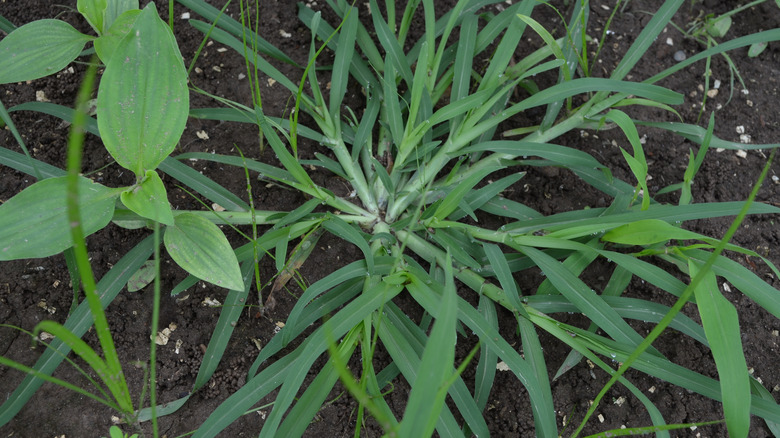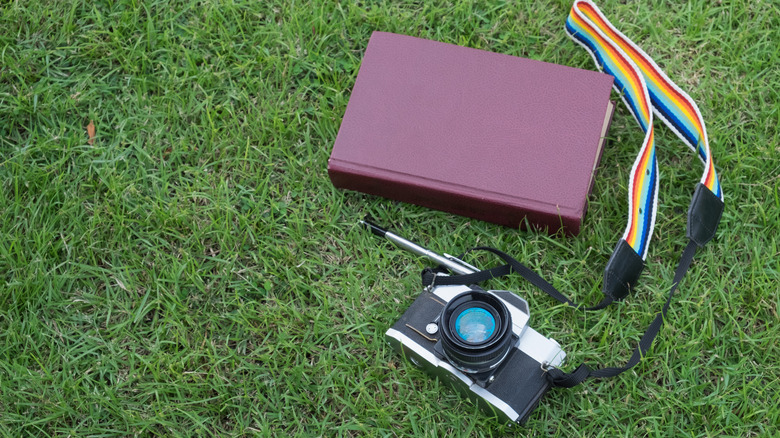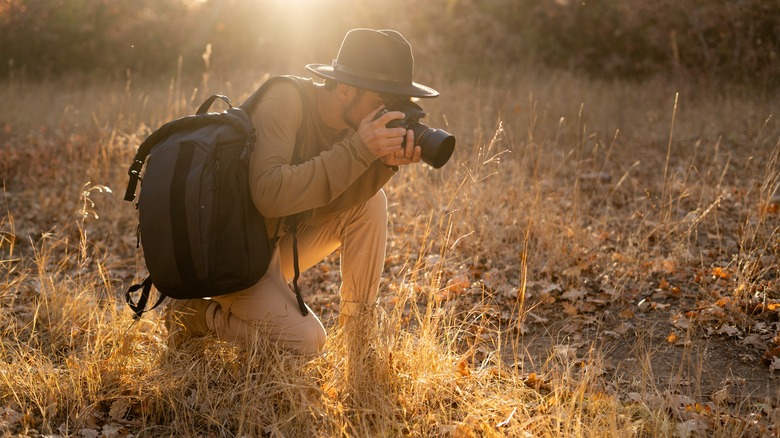Fixing Your Crabgrass Problem Will Take Time, But Here's The First Big Step
Removing crabgrass from your lawn can seem like an endless and hopeless task. You may think you've finally eradicated the pesky plant, just to have it pop up again as soon as the warmer weather arrives. You may even wonder if you've made any progress or if all your work is for naught. The clever strategy of taking regular photographs of trouble spots on your lawn and comparing them from month to month and even year to year will help you better assess if you are winning your fight against crabgrass and where to focus your efforts.
Crabgrass thrives in hot and dry conditions, where it often outcompetes turf grass, and while it is an annual, each plant can produce up to 150,000 seeds. These seeds germinate and sprout the following year once soil temperatures have reached about 55 degrees Fahrenheit. Some seeds can even survive for up to three years, popping up just as you may think you've solved your crabgrass problem. Because of how many seeds each plant produces, failing to pull or kill just a few crabgrass plants before they set seed can set you up for another year of crabgrass frustration. This is why documenting and photographing your yard's crabgrass trouble areas is so important — it reminds you where to focus your efforts next year and helps you stay one step ahead of the resilient weed.
Using photographs to track your crabgrass fight
As almost everyone carries around cameras these days, thanks to the ubiquity of cell phones, it's easy to snap a few pictures of your crabgrass throughout the season. Using those photos to properly track your progress against the crabgrass takes a bit more effort than that, though. As the University of Montana notes in its Noxious Weed Monitoring Guide, taking photos from the same location each time is important to allow for the best comparisons. If your photographs are so close up that you can't tell where in your yard they were taken, they won't do you much good in documenting your progress. So make sure you can see some landmarks in the photograph, whether that be a specimen tree in your yard, one of your home's exterior walls, or a distinctive decorative boulder.
Once you've taken your photograph, save it in an app or an easy-to-find folder on your computer because you'll be referring back to it regularly. Of course, these pictures can also be printed and put in a physical notebook or binder if you prefer, as well. Date both your photographs and any accompanying notes you've taken regarding what treatment was used. These notes and pictures function much like a garden journal you might keep to improve the raised plant bed in your garden, but instead of tracking improvements to wanted plants, you'll hopefully be tracking the slow destruction of unwanted weeds.
Using photographs to decide a crabgrass treatment plan
Early spring is one of the most useful times to refer to these photographs. Because crabgrass doesn't germinate until soil temperatures begin to warm, your yard may look perfectly crabgrass-free, but that doesn't mean the pernicious weed seeds aren't there and biding their time. This is the perfect time to apply preemergence herbicides, which prevent the crabgrass from establishing once it germinates. It's usually a bit tricky to know precisely where to use these preemergence herbicides, though, since, as the name implies, the weeds they target haven't emerged yet. Luckily, your photos will show you exactly where to spray. Take a photo after applying the herbicide and note the brand used.
Once temperatures warm, you should be able to easily compare your current crabgrass situation to that of the previous year and assess how well your preemergence herbicide worked. If necessary, you can continue battling the crabgrass by mowing, pulling the weeds, and using post-emergence herbicides. Ensuring your turf grass is dense and thick also helps choke out weeds like crabgrass. What better way to track your turf grass growth than with photographs? Regardless of what tips and tricks you use for killing crabgrass in your lawn, regularly taking pictures will help you assess their effectiveness and ensure you are treating the right area.


